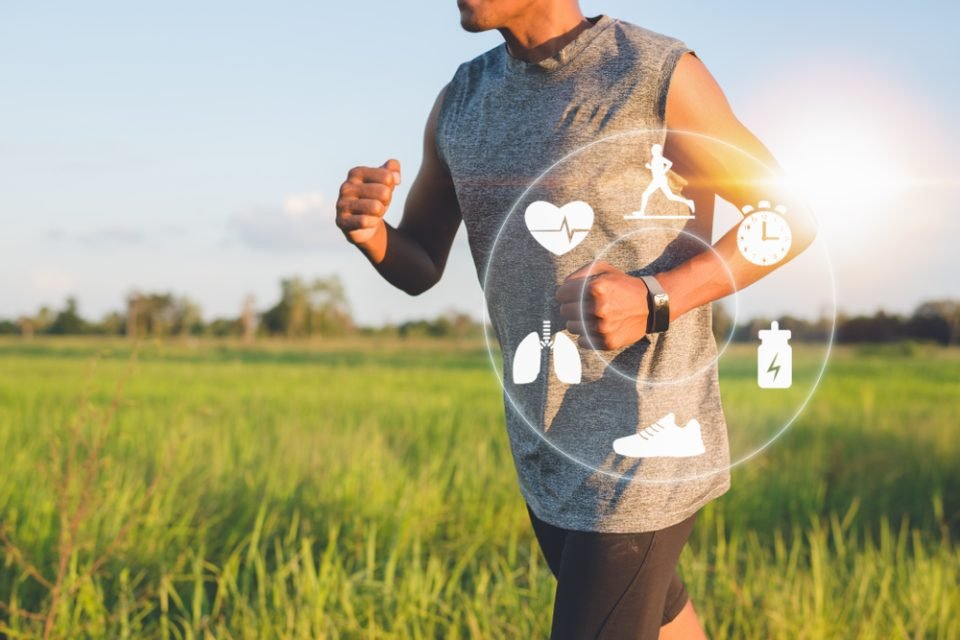Diverse IoT applications are helpful to address particular implementations. Leveraging the same sensors and gateways in a specific flow and system architecture can serve different needs. For instance, a health monitoring system can monitor the health parameters of athletes particularly. So far, coaching systems only analyze the performance statistics and watch the rest regime. Adding health parameters into account can better monitor the conditioning of an athlete’s state. Developments of wearables, data analytics, and IoT offers a new level of wellness and performance. This data-driven approach can help athletes maximize their training and give their best performances.
Health & Excellence With Athlete Health Monitoring
Several variables play a role in an athlete’s performance. Measuring an athlete’s health can allow insights for better coaching, rest, and campaigning. Clever athlete health monitoring can be helpful to avoid injuries, enhance preparation and manage medical records. Here are different areas where health monitoring can benefit athletes:
- Well-being:
Wellness monitoring is important to ensure that athletes are ready for their training, have no fatigue, and are well-rested. Ensuring well-being is the key to avoid injuries for athletes and securing their long-term successful careers.
- Optimized workload:
An abrupt workload can cost athletes a life-long injury. As such, it is vital to monitor the workload for an athlete. A Health monitoring system ensures that exercising remains in the high performance-low risk areas.
- Injuries & illness:
Coaches need to study the complete history of athletes to make the best decisions & regime. Electronic Health Records (EHR) can provide a comprehensive background on an individual. That way, a wellness plan can account for previous injuries and illnesses.
- Performance & evaluations:
Technology is the most accurate way to measure performances for athletes. Sensors and actuators can allow precision athlete health monitoring in preparations and exercises. Moreover, sensors can provide insights beyond just reps, time, and speed. Thus, it would be a game-changer for athletes.
Athlete Health Monitoring: Hardware Aspect
Smart electronic devices allow efficient physiological insights for athletes’ health. Athletes’ health can be monitored with a few vital sensors. Wearable sensors are the best way to get insights into a sports person’s condition when working out. Here are a few parameters that could be useful to track:
- Heart rate sensing:
Heart rates can be an alarming parameter for any athlete if it is out of line. Sensing Heart activity can be crucial to identify the performance limits and also to work around them in a smarter manner.
- Breathing rate sensing:
Respiration rate, just like heart rate, is one of the most critical life parameters. Therefore, observing athletes’ breathing rate is important for coaches and team administration.
- Muscle electrical activity:
Electromyography (EMG) can measure muscle response to nerve stimulation. Monitoring muscle electrical activity can identify if there’s a problem with a response from any nerve or muscle.
- Cognitive functioning:
Cognitive health is another blessing from technology. Until now, athlete’s mental health monitoring was not feasible. Measuring mental health and cognitive functions are as important as physical conditions, if not more.
- Sleep tracking:
Sleep tracking can help identify the quality of sleep, any disturbances, or sudden wake-ups. Thus, it is the key to ensure that athletes had proper rest and recovery.
- Movement trackers:
Tracking movement can refer to the number of foot counts, speed of activities, and much more. Hence, it is the vital health parameter to analyze the physical performance of an athlete.
Because of technology, it is now feasible to monitor these parameters easily. These factors can be monitored through different parts of the body. For instance, skin patches can monitor heart rate. Similarly, intelligent garments, smart wristbands, headsets, and ankle wear can be part of athlete health monitoring systems.
Conclusion
Monitoring the athlete health data is the first step of the lengthy process. Data analytics is the next essential item that is helpful to interpret data. Furthermore, insightful data can then be sent to a central athlete health monitoring record, where it can be stored along with previous health records. That way, one can monitor health of an athlete with a graphic user interface. Following the insight, players and coaches can identify the challenges. As a result, athletes can overcome their limits and perform better. Combining this technological element with nutrition, workout regimes, and medical attention can improve athletes’ overall success. Hence, it is one of the demonstrations of how technology can serve a particular purpose. Future athletes will keep raising the bar with the help of such advancements as a result.
Develop great IoT solutions with high quality software, devices and infrastructures. Contact us!


